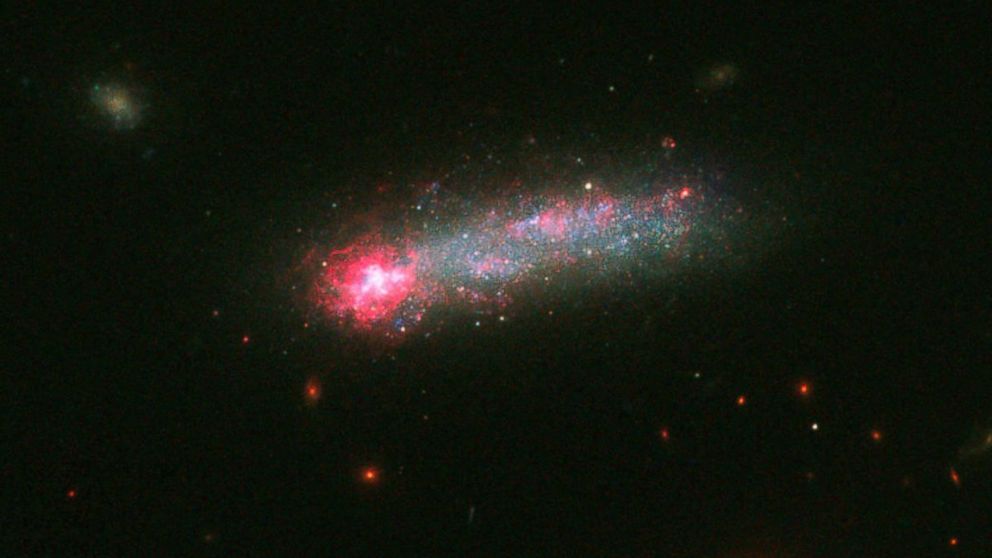Hubble Space Telescope Catches a Glimpse of 'Fireworks' in Nearby Galaxy
Just in time for the 4th of July, the space telescope captures celestial show.

— -- The Hubble Space Telescope captured a celestial fireworks show in a miniature galaxy, coming just in time for the Fourth of July.
The galaxy, named Kiso 5639, is located 82 million light-years away from Earth. A photo released by NASA shows just how busy the "tadpole" galaxy is as a firestorm of newborn stars blaze out of one end of the galaxy, lighting up the cosmos.
Astronomers believe the spectacular light show may be caused by "intergalactic gas raining on one end of the galaxy as it drifts through space," according to a NASA statement.
"Galaxies rotate, and as Kiso 5639 continues to spin, another part of the galaxy may receive an infusion of new gas from this filament, instigating another round of star birth," Debra Elmegreen, a researcher from Vassar College, said in a NASA statement.
The photo comes as NASA announced this month it was extending Hubble's mission through 2021.
Hubble's incredible reach -- made possible by the fact that its sight was not impaired by the distortions created by the Earth's atmosphere -- has allowed astronomers to get closer looks at space phenomena like never before, watching stars and planets as they form, examining exoplanets and capturing the power of cosmic impacts.
Since its launch in 1990, Hubble has made more than 1.2 million observations and its findings have been published in more than 12,800 scientific papers, according to NASA data released last year, making it one of the most successful scientific instruments ever built.
Whizzing around Earth at 17,000 mph, Hubble has racked up more than 3 billion miles in flight, according to NASA.
Its incredible resolution has allowed the telescope to look at areas as far as 13.4 billion light years away from Earth -- in essence, peering back into a time when our universe first emerged from the Big Bang. The telescope is so precise that it is equivalent to someone shining a laser beam on a dime from 200 miles away, according to NASA.
Hubble's successor, the James Webb Space Telescope, is set to launch in 2018.




